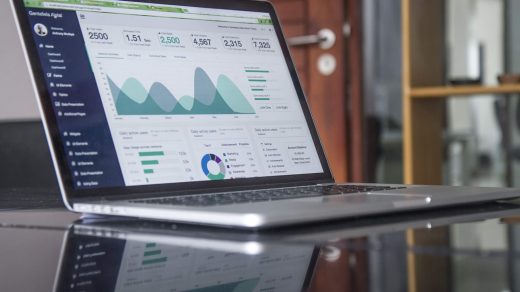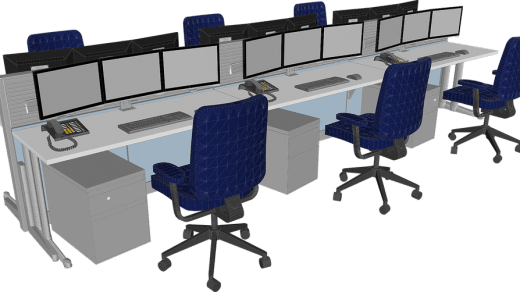An access control system is a collection of hardware, software, and procedures that give only authorized individuals access to restricted areas within an organization. They are a critical part of the security strategy of any large corporation because many people often enter and exit a company’s building daily.
Therefore, if a company does not have an effective access control system, it could lead to sensitive information being accessed by unauthorized individuals or even sabotage the company altogether.
There are three types of access control systems: physical, logical, and biometrics.
- Physical systems use guards or other hardware, such as cameras, to detect whether a person has permission to enter a building or room.
- Logical systems use passwords or cards issued by various companies (such as ID cards).
- Biometrics uses fingerprints, retina scans, or facial recognition technology.
Access control systems are one of the core features of any organization’s security measures. It protects the integrity of data, which can help you avoid a lot of trouble if someone tries to access your systems without permission.
To make certain that there is no breach in data security, organizations should implement access control in the following areas.
- Business processes: This includes anything that happens on the company’s systems, such as when a process is run, who it is run by, what it does, and who has access to it.
- People: This includes everything from hiring decisions to employee training and evaluation processes. Clearly define what information employees can see and how much time they can spend accessing it.
- Security policies: These should detail what types of data are shared across the organization. For example, how long financial information is kept online or offline, password expiration, and what happens if someone leaks or loses control over their data.
- Information classification: This is the process of determining what information is appropriate for which users and groups. This can include looking at the sensitivity of the information and its potential impact on both legal and business scenarios.
- User authorization: This system grants an individual permission to access a specific resource or function within an application or system.
How does an access control system work?
An organization’s access control system is a multi-layered security mechanism that protects large organizations from internal and external threats. It provides multiple levels of security, including authorization, authentication, access, and audit management.
- Authorization: This involves how details of employees and visitors are registered to create a profile for each user or group member. Once this information has been entered into the system, the organization can use it for various purposes, such as granting or denying access to certain areas within its premises.
- Authentication: Authentication is the process of granting access to a system. It is a way to ensure that people who have been granted access can only use it in the way you want them to.
- Access: This is provided to gain access to a system or resource. Access may be provided for appropriate needs when the system identifies an individual’s credentials and grants them access to the necessary information or resources.
- Audit management: This process identifies potential vulnerabilities in the system. The objective of an audit is to find out if there are any weaknesses or loopholes in the software, hardware, or network. Routine audits are done to manage and monitor any security threats.
Why should large organizations use access control systems?
Large companies and other establishments should use access control systems for the following reasons:
- Simplified management system: Access control systems will help them to manage the access that their employees and customers have as well as their data more efficiently. It will also reduce the risk of failure and fraud.
- Record and track activities: Recording and keeping track of all activities on the premises can help prevent crimes, such as theft or sabotage. It also helps keep track of assets, which is especially important in businesses with high-value items or equipment that need to be maintained regularly.
- Create specific credentials for access to confidential areas and documents: This is an important step in managing information security. Large organizations need a strong, secure password policy to protect their data from unauthorized access.
- Adjust access timings: This will ensure no overlap in the usage of a particular resource, thereby making it more efficient. The provision of such a system will also reduce the chances of any malicious activities being carried out by employees.
- Hassle-free access control: The traditional way of controlling access to resources is prone to security breaches and a high risk of data loss. They also require a lot of time and effort. An access control system eliminates all these issues by providing a centralized management platform that people can access anywhere at any time.
- Monitoring: Access control systems in large organizations can monitor the entry and exit of people to the company, and alert them in case of any suspicious activities.
- Improves security: Access control systems will improve the security of people and data because they are more vulnerable to cyber attacks than smaller ones, which means they need to ensure that their data is safe from hackers.
Factors to Consider When Choosing an Effective Access Control System
The following aspects are essential when considering installing an efficient access control system:
- Quality keypad reader: This will determine whether or not you can deny or grant access to a particular device or individual.
- Proper credentials: If your company has more than one employee who needs access to different areas of their workspace, each person must have unique credentials. This way, they don’t have to share them with others who might try to open up files or folders on their computer without permission.
- Electronic door locks and alert systems replace traditional security keys: Electronic door locks and alert systems will typically allow employees greater flexibility when trying out different workstations within the organization’s building structure.
- Reliability and history of the manufacturer: You want to make sure that the company you’re dealing with is established and respected, with quality reviews.
- Understand the system and its mechanisms: The more people understand the access control system and how it works, the better. Employers can do this by educating employees on the need for proper use of the system.
Get the Best Quality Access Control Systems Today
Access control systems are necessary for big organizations. Large companies and government agencies have different needs than smaller companies, but they all require similar security measures against vandalism, trespassing, employee fraud, and identity theft, among other issues.
The role of an access control system in maintaining security is to monitor physical movement within the facility and keep track of key cards used by employees or visitors. Security personnel can then use this information to ensure that only authorized people enter specific areas or departments within a building.
Access control systems are vital tools for large organizations to help prevent unauthorized access to valuable information. The technology is also designed to ease the burden on security personnel and reduce costs associated with manually monitoring entrances and exits.
Author:

Jessica Coates is a blogger in Toronto. She graduated with honors from the University of British Columbia with a dual degree in Business Administration and Creative Writing. Jessica Coates is a community manager for small businesses across Canada. When not working, she leisurely studies economics, history, law and business solutions.




I wholeheartedly concur that the process of allowing access to a system is known as authentication. You went on to say that it is a means of ensuring that those who have been authorized access may only utilize it in the manner you choose. This is precisely why my husband and I are thinking about installing a card access control system to ensure that only authorized workers can enter in light of the growing security concerns surrounding our office building. It appears to be a workable way to improve security and simplify access management.
I totally agree that while large businesses and government organizations have different requirements than smaller ones, they all need security measures to protect against, among other things, vandalism, trespassing, employment fraud, and identity theft. This is exactly why with the increase in security concerns around our office building, my husband and I are considering implementing a card access control system to ensure only authorized personnel can enter. It seems like a practical solution to enhance security and streamline access management.